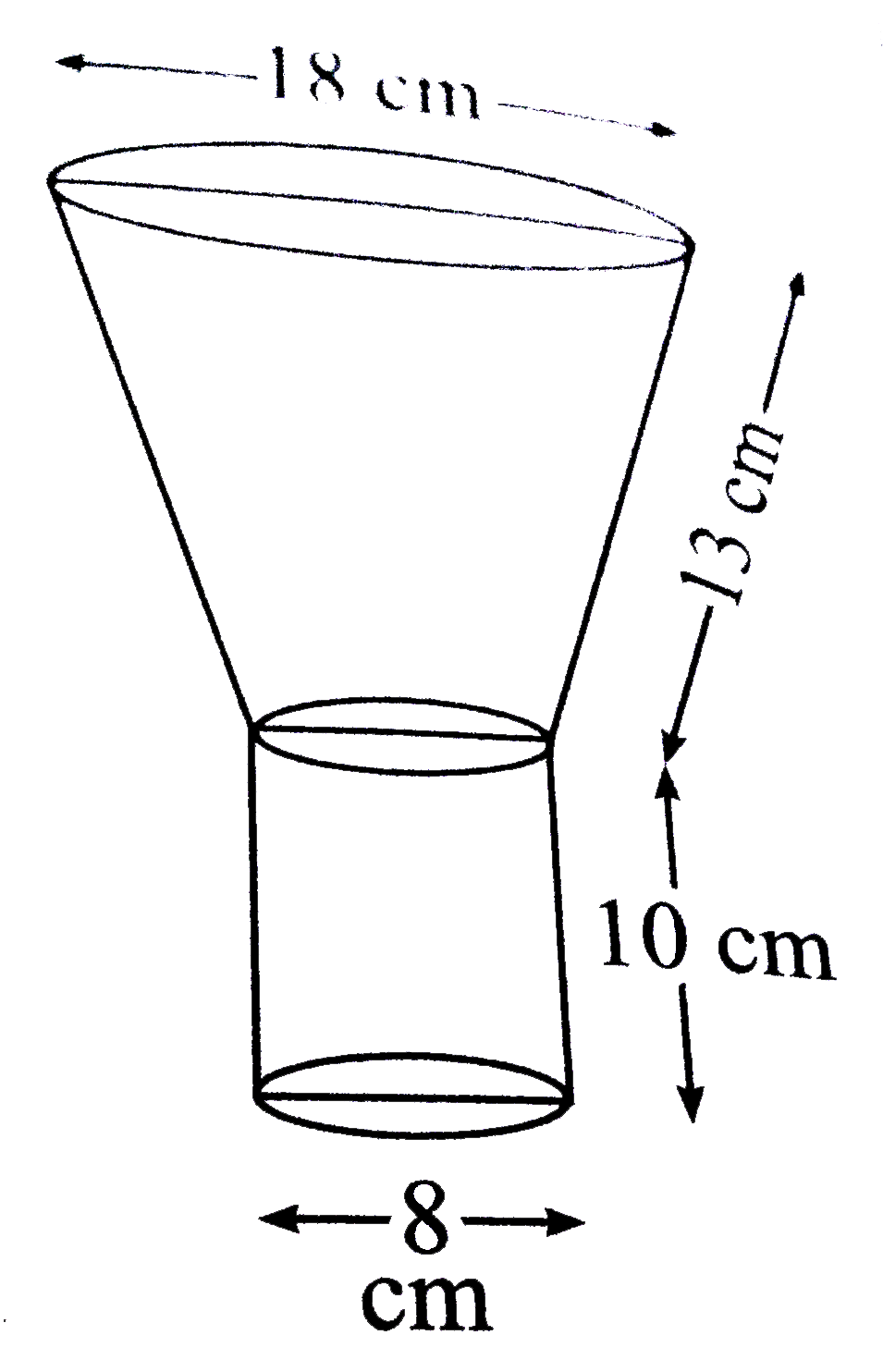The diameters of top and bottom portions of a milk can are 56 cm and 14 cm respectively. The height of the can is 72 cm . Find the
(a) area of metal sheet required to make the can (without lid).
(b) volume of milk which the container can hold.
The milk can is in the shape of a frustum with R = 28 cm, r = 7 cm and h = 72 cm.
(a) Area of metal sheet required =Curved surface area + Area of bottom base
=πl(R+r)+πr2
Now, l=√(R−r2)+h2=√(28−7)2+722=√212+722=√9(72+242)
=3√49+576=3×√625=3×25=75cm
∴Area of metal sheet=227×75(28+7)+227×72=22×75×5+22×7
=22(375+7)
=22(382)=8404cm2.
(b) Ammount of milk which the container can hold =13πh(R2+Rr+r2)
=13×227×72(282+7×28+72)
=227×24(7×4×28+7×28+7×7)
=227×24×7(112+28+7)
=22×24×(147)=77616cm3.
Topper's Solved these Questions
- MENSURATIONBOOK - PEARSON IIT JEE FOUNDATIONCHAPTER - MENSURATIONEXERCISE - Very Short Answer Type Questions
30 Videos
- MENSURATIONBOOK - PEARSON IIT JEE FOUNDATIONCHAPTER - MENSURATIONEXERCISE - Short Answer Type Questions
19 Videos
- MATRICESBOOK - PEARSON IIT JEE FOUNDATIONCHAPTER - MATRICESEXERCISE - EXERCISE CONCEPT APPLICATION (LEVEL 3)
15 Videos
- MODULAR ARITHMETIC BOOK - PEARSON IIT JEE FOUNDATIONCHAPTER - MODULAR ARITHMETIC EXERCISE - Level 3
15 Videos
Similar Questions
An oil funnel of tin sheet consists of a cylindrical portion 10 cm long attached to a frustum of cone. The diameters of the top and bottom of the frustum are 18 cm and 8 cm respecti8vely. If the slant height of the frustum of the cone is 13 cm, find the area of the tin required to make the funnel from the given information in the figure
(π=3.14)

View SolutionThe diameters of the lower and upper ends of a bucket in the form of a frustum of a cone are 10cm and 30cm respectively.If its height is 24cm ,find : (i) The area of the metal sheet used to make the bucket.
View Solution
Knowledge Check
The diameter of two hollow sphere made from the same metal sheet are 21 cm and 17.5 cm respectively. The ratio of the area of metal sheets required for making the two sphere is
A6:5B36:25C3:2D18:25The diameters of the top and the bottom portions of a bucket are 42 cm and 28 cm. If the height of the bucket is 24 cm, then find the cost of painting its outer surface at the rate of 5 paise/cm2.
ARs. 158.25BRs. 172.45CRs. 168.30DRs. 164.20The radii of the top and bottom of a bucket of slant height 10 cm are 14 cm and 6 cm respectively. The curved surface area of the bucket is (π=3.14)
A628 cm2B629 cm2C630 cm2D631 cm2
An open metallic bucket is in the shape of the frustum of the cone. If the diameters of the two circular ends of the bucket are 45 cm and 25 cm and the vertical height of the bucket is 24cm, find the area of the metallic sheet used to make the bucket. Also find the volume of water it an hold. (Use π=227)
View SolutionThe diameters of the top and the bottom portions of a bucket are 42cm and 28cm. If the height of the bucket is 24cm, then find the cost of painting its outer surface at the rate of 5paisecm2.
View SolutionFind the area of metal sheet required in making a closed hollow cone of base radius 7cm and height 24cm.
View SolutionThe volume and the height of a right cylinder are 70 cm3 and 14cm respectively. Find the area of its base circle.
View SolutionFind the area of the iron sheet required to prepare a cone double the height of 12 cm with diameter of the base 14 cm.
View Solution
